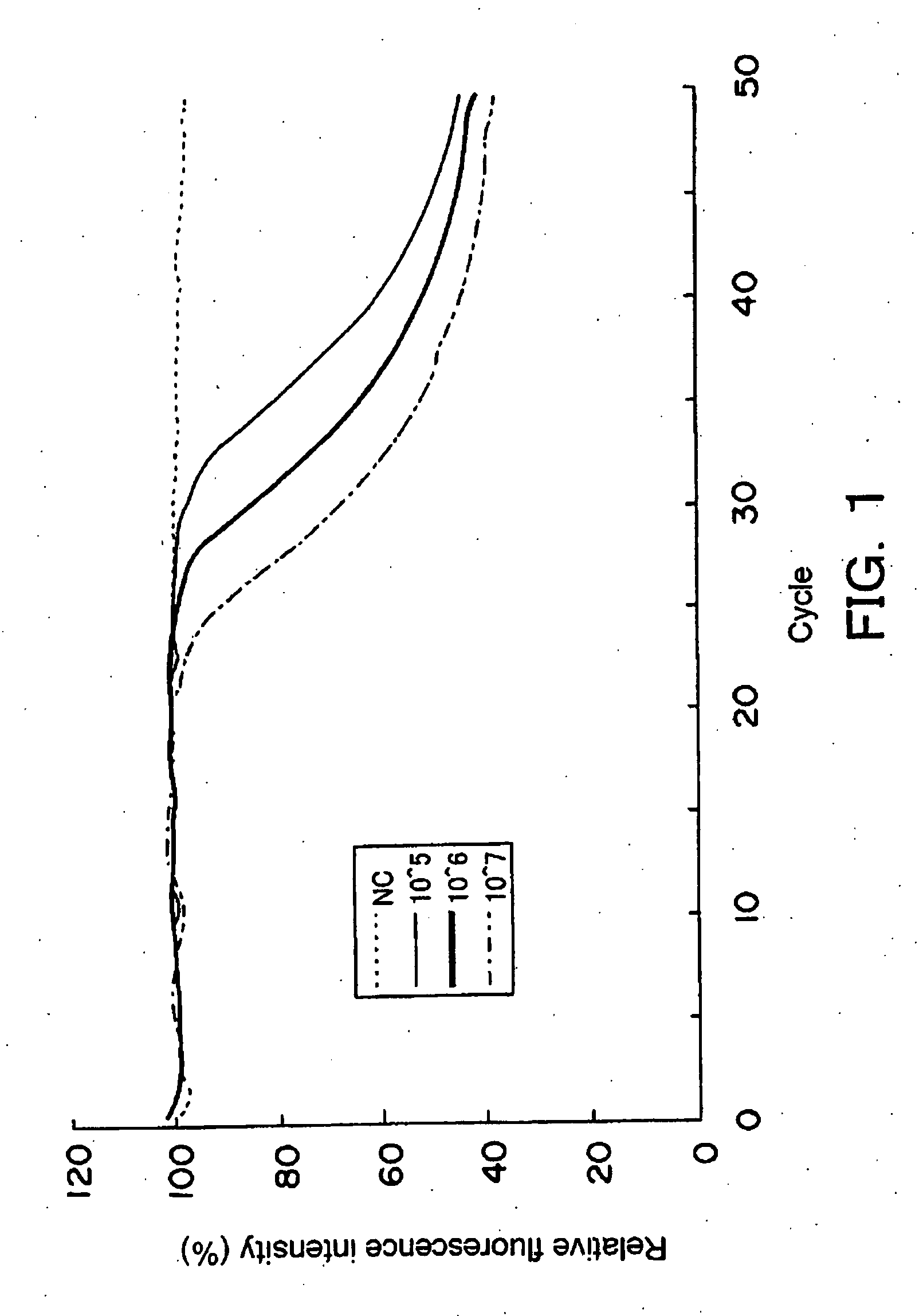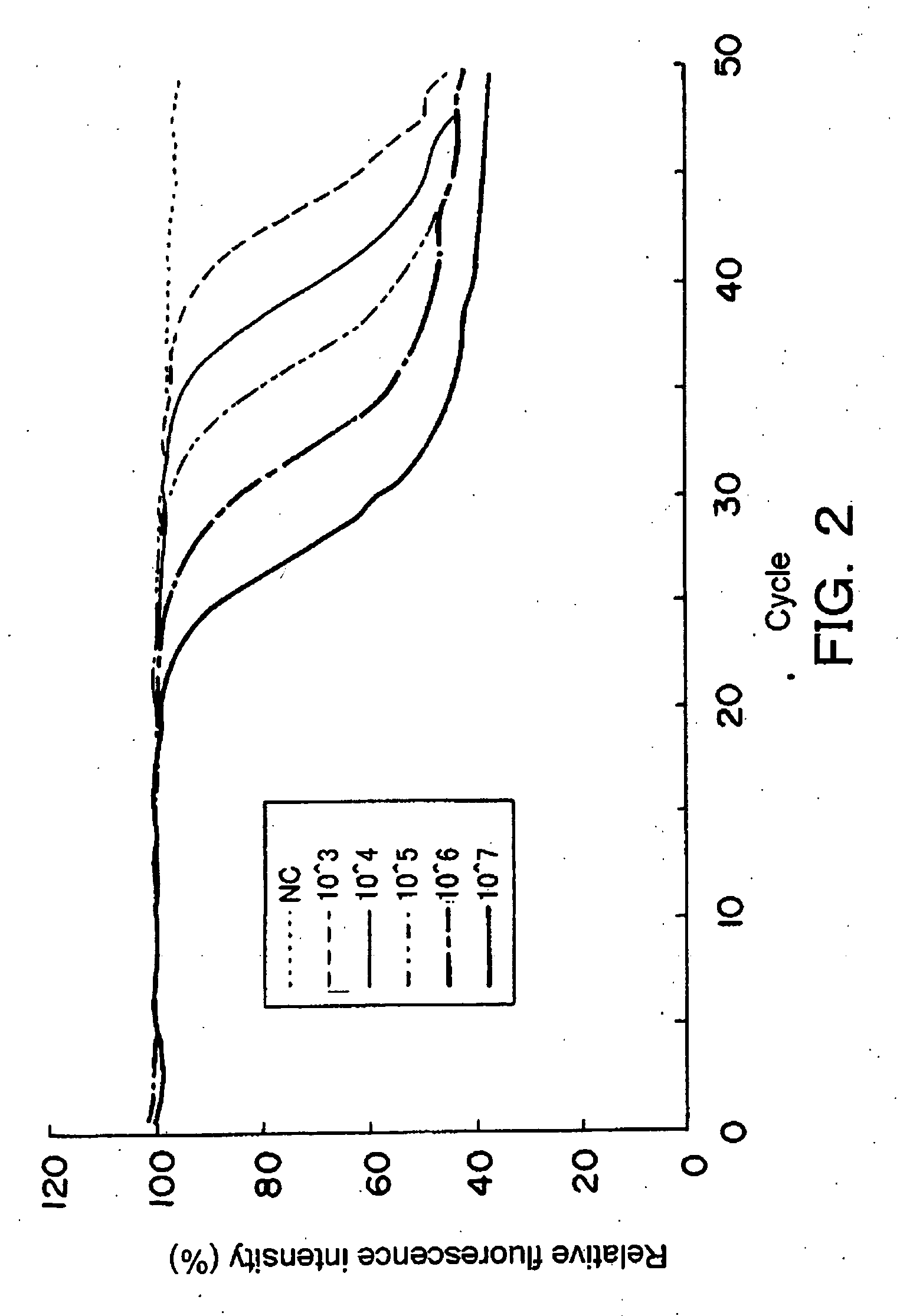Method of detecting or quantitatively determining mitochondrial dna 3243 variation, and kit therefor
a mitochondrial dna 3243 and kit technology, applied in the field of methods for detecting and quantifying mitochondrial dna 3243 mutations and kits there, can solve the problem of not having a quenching probe that enabled detection and was easy to obtain
- Summary
- Abstract
- Description
- Claims
- Application Information
AI Technical Summary
Benefits of technology
Problems solved by technology
Method used
Image
Examples
example 1
[0106] The primers shown in Table 4 were designed on the basis of the nucleotide sequence containing the site of human mitochondrial 3243 A→G mutation (mt3243 mutation) (SEQ ID NO: 2, the nucleotide number 243 corresponds to the 3243rd position in the mitochondrial gene) so that a region containing the mt3243 mutation could be amplified. In Table 4, the positions are indicated with the nucleotide numbers in the nucleotide sequence of SEQ ID NO: 2.
TABLE 4PrimersSEQ IDNameSequence (5′ → 3′)merPositionNO:F-24ctcaacttagtattatacccacac24187-2103R-19ttttatgcgattaccgggc19262-2444R-mt-16atgcgattaccgggcc16258-2435
[0107] Then, probes having C at the ends shown in Table 5 were designed. In Table 5, the positions are indicated with the nucleotide numbers in the nucleotide sequence of SEQ ID NO: 1 or 2. Further, the capital letters in the nucleotide sequences represent sites of the mt3243 mutation, and (P) at the 3′ ends means being phosphorylated. The probe was labeled with BODIPY (trademark) ...
example 2
[0115] The primers shown in Table 8 were designed on the basis of the nucleotide sequence containing the site of human mitochondria 3243 A→G mutation (mt3243 mutation) (SEQ ID NO: 2, the nucleotide number 243 corresponds to the 3243rd position in the mitochondrial gene) so that a region containing the mt3243 mutation could be amplified. In Table 8, the positions are indicated with the nucleotide numbers in the nucleotide sequence of SEQ ID NO: 1.
TABLE 8SEQPrimersIDNameSequence (5′ → 3′)merPositionNO:F-27catctcaacttagtattatacccacac27184-21011R-22agaggaattgaacctctgactg22296-27512
[0116] Then, the probes having C at the ends shown in Table 9 were designed. In Table 9, the positions are indicated with the nucleotide numbers in the nucleotide sequence of SEQ ID NO: 1. Further, the capital letters in the nucleotide sequences represent sites of the mt3243 mutation, and (P) at the 3′ ends means being phosphorylated. The probes were labeled with BODIPY (trademark) FL or TAMRA (trademark) in...
PUM
| Property | Measurement | Unit |
|---|---|---|
| Length | aaaaa | aaaaa |
| Fluorescence | aaaaa | aaaaa |
Abstract
Description
Claims
Application Information
 Login to View More
Login to View More - R&D
- Intellectual Property
- Life Sciences
- Materials
- Tech Scout
- Unparalleled Data Quality
- Higher Quality Content
- 60% Fewer Hallucinations
Browse by: Latest US Patents, China's latest patents, Technical Efficacy Thesaurus, Application Domain, Technology Topic, Popular Technical Reports.
© 2025 PatSnap. All rights reserved.Legal|Privacy policy|Modern Slavery Act Transparency Statement|Sitemap|About US| Contact US: help@patsnap.com



